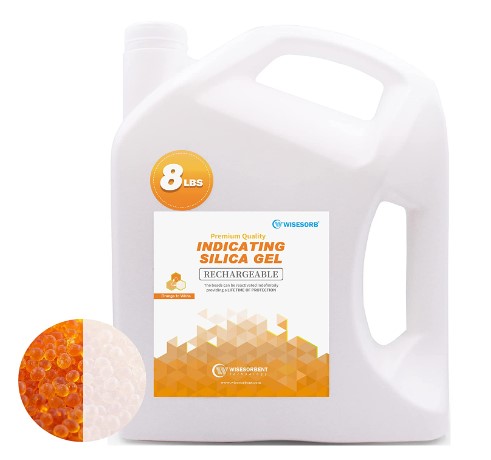Every time you enter your living room, do you get the sense that you are living in a sauna? Do you worry that there might be mold growing in hidden fissures in your home?
If you are struggling with high humidity levels and damage caused by high humidity, it’s time to learn how to dehumidify a room and take charge of your space.
Ideally, you should dehumidify a room daily if the humidity levels in the room are over 55% RH (relative humidity). In general, the number of times a room should be dehumidifier depends on the current relative humidity in that room.
Everything you need to know about preserving the ideal humidity level in your house, including how frequently you should dehumidify and the most effective methods for doing so, will be covered in this article.
So let’s bid that sticky, muggy sensation farewell and welcome a dryer, cozier living space. If you already have respiratory illnesses or have previously seen mold growth in certain parts of your home, a room’s high moisture level may be cause for alarm.
If you have children in your house, the negative health effects of excessive humidity levels may be even more severe because kids’ immune systems can be readily weakened by mold exposure.
In this post we will cover the following:
- Dehumidification and its importance
- Factors that affect the humidity level in a room
- How to determine the ideal humidity level for a room
- How often should you dehumidify a room?
- Techniques for dehumidifying a room

Dehumidification And Its Importance
Dehumidification is the process of removing excess moisture from the air in a room or enclosed space. It is important because high humidity levels can lead to several issues such as:
- Musty odors: Musty odors are usually caused by excessive accumulation of mold in an area.
- Damage to wood and other materials due to moisture: Excess moisture can cause water-related wood damage, which will leave the shapes of your wooden furniture looking distorted.
- Increased risk of mold growth: High moisture content increases the risks of mold growth as the growth of mold is supported by the presence of moisture and air.
Uncomfortable, sticky feeling in the air: During summer, you are likely to notice the air feels stuffy and your clothes feel sticky. The feeling of high moisture content in the air can be compared to the feeling of being outside when it is drizzling.
Maintaining the proper humidity level in a room can help to improve air quality and prevent these issues. It can also make the room feel more comfortable and reduce the risk of respiratory issues for people living or working in the space.
Factors That Affect The Humidity Level In A Room
Temperature: The humidity level in a room may be affected by its temperature. As the temperature rises, the air’s ability to hold moisture increases, resulting in increased humidity levels.
Conversely, when the air temperature falls, the air can retain less moisture, resulting in decreased humidity levels. This is why summer is characterized by higher humidity levels in the air when compared to other seasons.
Ventilation: By allowing excess moisture to leave through natural ventilation like windows or installed vents, the ventilation can assist you to manage the humidity level in a space. When a room is inadequately ventilated, the humidity level rises, potentially leading to mold development and musty smells.
Outdoor humidity level: The humidity level outside may influence the humidity level within a space. High humidity levels outdoors might contribute to increased humidity levels inside, particularly if the area is not well-aired.
The number of persons present in a room: The body naturally creates moisture when you breathe or sweat, as such, the number of people in a room can impact the humidity level. When there are more people in a room, there is more moisture in the air, resulting in greater humidity levels.
Activity: Certain activities in the room might also lead to greater humidity levels in the room. Cooking and bathing, for example, release moisture into the air, resulting in increased indoor humidity levels.
Humidifiers or diffusers: If you are using a humidifier in your room, the humidifier can raise the humidity level in a room to a very high level, especially when it is not regulated or when you are using a large humidifier in a small space. Similarly, a diffuser can increase the humidity levels in a room.
How To Determine The Ideal Humidity Level For A Room
The recommended humidity level for a room is between 40-50%. Anything that is above 55% is generally considered high while humidity levels lower than 30% are categorized as very low humidity levels.
Use a hygrometer to measure the humidity level in your room. This will help you determine whether the humidity level in your home is too high, within the recommended level, or below the recommended levels.
How Often Should You Dehumidify A Room?
If the humidity level is above 55%, you should dehumidify the room daily to reduce the humidity level and attain the recommended level of between 40% and 50%.
If the humidity level is between 35-55%, you can dehumidify the room every few days to maintain a humidity level of between 40 to 50%, especially in cases where you notice a spike in the humidity levels at certain times during the day.
If the humidity level is below 30%, dehumidify the room as needed (such as when cooking, doing your laundry, or engaging in other activities that can easily increase the relative humidity in your home to excessively high levels).
Techniques For Dehumidifying A Room
Air conditioning: When using an air conditioner in your home, you are likely to notice that the air gets chilly especially if the initial temperatures in the room were high. As the air conditioner cools the room, excess moisture is removed during the cooling process.
Dehumidifier: Dehumidifiers are great for reducing the overall humidity in a room. Generally, dehumidifiers work by drawing in humid air, removing the moisture from the moisture-filled air, and then releasing the dry air back into the room.
Ventilation: Using natural vents or installed ventilation systems in a room can significantly help remove excess moisture from the air. If you wish to use natural ventilation, you can simply open your windows or doors.
Absorbent materials: Aside from the methods mentioned above, you can also use absorbent materials like silica gel or calcium chloride to absorb excess humidity from the air in your home.
Some non-electric dehumidifiers use silica gel technology to absorb excess humidity from indoor spaces. This functionality eliminates the need for plugging in the dehumidifier to an electric outlet when you need to use it.
When using these absorbent materials, you can place them in strategic locations around the room to effectively reduce humidity.
For instance, placing a silica gel beads dehumidifier in your basement or under your kitchen sink will help absorb the excess humidity that often accumulates in these areas.
An example of a silica gel beads-based dehumidifier that you can get for your home is the Eva-dry E-500 or E-333 dehumidifier. To learn more about these dehumidifiers, check out the link recommended below.
Recommended article: Rechargeable Dehumidifiers
An alternative product is the Wisesorb 8 LBS Indicating Silica Gel Beads.

Features
- Strong moisture absorption ability
- Can be used in spaces of up to 30 cubic ft.
- Dimensions: 9.06 x 3.74 x 11.61 inches
- Weight: 8 pounds
Pros
- Color changes from orange to white when saturated
- Reusable after being dried
- Easy to reactivate after use
- Great for protecting small enclosed spaces from humidity-damage
Con
- If you want to dehumidify a large area, you might need more beads.
Conclusion
Maintaining the right humidity level in a room will greatly improve the air quality in your home and prevent issues such as the growth of mold, musty smells, and wooden furniture damage.
Before using a dehumidifier or any other moisture-removal technique, you should ensure that you check the humidity levels in your home first. Ensure that you maintain a humidity level of approximately 40 to 50% RH in your home.
Avoid using a dehumidifier when the humidity levels in your home are below 30%, as that could lower the humidity levels in your home even further, and place you at risk of the effects of dry air.